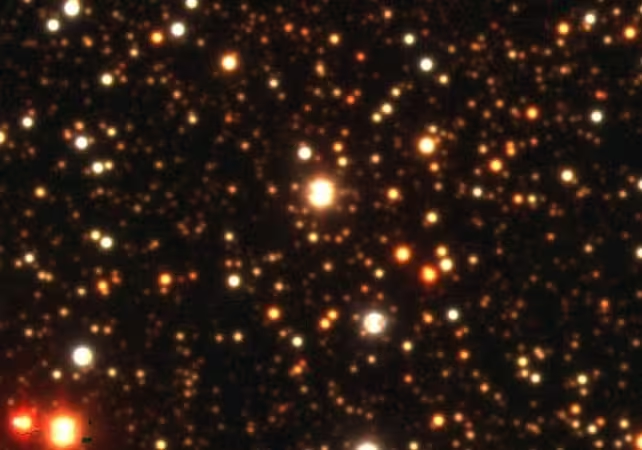4 Minutes
A seemingly ordinary red giant orbiting an invisible companion in the Gaia BH2 system is rewriting expectations about how stars age. Its chemical fingerprint says 'ancient,' but its internal clock and spin say 'middle-aged'—and that mismatch points to a violent past.
A puzzling age mismatch: chemistry vs. stellar heartbeats
When astronomers measure a star’s light, they read a long biography: temperature, elements, and signs of how the star lived. The Gaia BH2 companion is loaded with alpha elements—elements (like oxygen, neon, magnesium, silicon) forged in early generations of massive stars and typically abundant in stars born in the young Universe. That chemistry alone would normally place this star at roughly ten billion years old.
But NASA’s TESS satellite listened to the star’s subtle brightness flickers—starquakes—and delivered a different verdict. Asteroseismology, the study of those oscillations, revealed core properties consistent with an age nearer five billion years. As Daniel Hey, lead author of the new study in The Astrophysical Journal, notes, “Young, alpha-rich stars are quite rare and puzzling. The combination of youth and ancient chemistry suggests this star didn't evolve in isolation.”

Gaia BH2 (UCAC4 154-126202) (center) is a binary consisting of a star and a stellar mass black hole.
How astronomers probed the star and what they found
The team combined space-based asteroseismology with precise ground-based spectroscopy. Asteroseismology works like earthquake seismology: oscillations carry information about internal density, temperature gradients, and the mass of the core. Those measurements constrained the star’s true evolutionary state with unusually high precision.
Rotation reveals a hidden transfer of momentum
Another oddity: the red giant completes a rotation in about 398 days—faster than expected for an isolated star of similar age. Stars generally lose angular momentum as they expand into red giants. The unexpectedly rapid spin therefore points to an external event that injected angular momentum and mass.
Likely origin story: mergers or violent mass transfer
The most plausible explanations involve stellar violence. Either the red giant merged with a companion star at some point, or it accreted substantial material during the black hole’s birth from a previous companion that exploded or collapsed. Both scenarios add mass and angular momentum and can alter surface abundances, producing the strange alpha-rich yet apparently younger profile we observe now.
Gaia BH2 is a dormant black hole system: the black hole isn’t actively accreting and emits no X-rays. Instead, the presence of the dark companion is revealed by the tiny wobble in the visible star’s motion, detected by ESA’s Gaia mission. That technique has exposed a new population of quiet, stellar-mass black holes that would otherwise remain invisible.

Artist's impression of ESA's Gaia satellite observing the Milky Way.
Implications and next steps
This discovery has two wider implications. First, it shows how binary interactions and mergers can mask a star’s true age and chemical history. Second, dormant black hole companions may preserve evidence of past collisions or mass-transfer events that would be erased in active systems. The team also looked at Gaia BH3, where expected oscillations were not detected—suggesting current models for extremely metal-poor companions may need revision.
Future TESS observations, with longer time baselines, will refine oscillation detections and rotation rates for Gaia BH2 and similar systems. Those datasets should test the merger hypothesis and help quantify how common such violent histories are among the growing sample of dormant black hole binaries.
Source: sciencealert


Leave a Comment